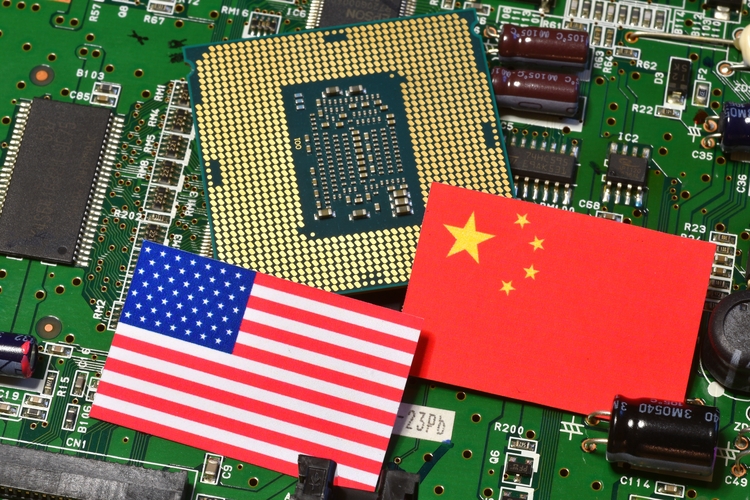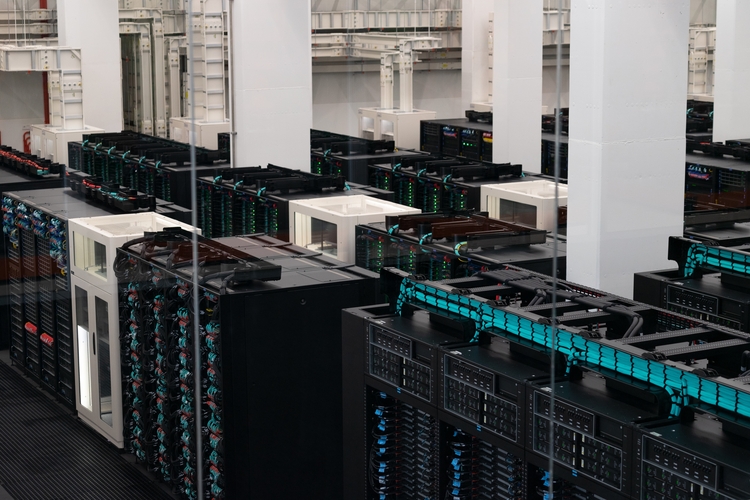
Worldwide, AI expenditure is set to hit $644 billion by the end of the year. But will such vast investment yield profit?
By
Almost three years ago, the release of ChatGPT sent the artificial intelligence industry into a spectacular boom. Since then, the sector has catapulted into popularity. In 2025, worldwide spending on generative AI is expected to reach $644 billion. That’s a jump of 76.4 per cent from 2024.
More than 1,300 AI startups now have valuations of more than $100 million, and almost 500 are valued at at least $1 billion.
In 2024, one survey found the number of respondents who reported using generative AI for business more than doubled, from 33 per cent in 2023 to 71 per cent in 2024. Clearly, AI is used everywhere and for everything – from helping to monitor wildfires, combating fraud and being used as an ever-present digital assistant for everything from shopping lists to meal plans.
Enjoying this article? Check out our related reads:
One thing is clear: AI remains a costly investment. Training AI models is extremely expensive: one recent study estimated the cost to train the most compute-intensive models has grown 2.4 times per year since 2016.
Despite its growth, though, some remain sceptical that current investment and hype around artificial intelligence has outpaced the commercial value the tech can actually generate. In other words: companies and governments alike are pouring large sums into AI to expect future gains, but there is a risk that these expectations are not yet matched by sustainable profit gains. This is known as the AI bubble, and is similar to the dot-com boom of the 1990s where initial excitement gave way to deflated returns.
So, which nations are able to spend their cash on the ever-developing technology? How exactly do the costs of AI break down – and is the AI bubble a genuine cause for concern?
Sizing up the major players
Two major players on the global AI stage are China and the US. The US private sector leads by more than 12 times, with private-sector AI investment sitting at a sizeable $109.1 billion in 2024, compared to China’s $9.3 billion. Such a gap is even more pronounced in generative AI, where US investment exceeded the combined total of China, the EU and the UK by $25.4 billion.
US-based institutions have produced more than 40 ‘notable’ AI models, while China has produced 15 in the same period. Some of the US’s models are the most powerful in the world. Take GPT-4o, for example, which has an 130,000-word memory – the same ability as recalling every single sentence from War and Peace.
Such high-level models require vast swathes of energy to work – and a factor contributing to the high cost of AI is powering data centres that provide this energy.

In the US, data centres supporting AI are dramatically increasing their electricity demand. As more individuals use AI, this raises the risk of blackouts in states such as California. In China – especially in more remote zones – data centres rely on coal-powered grids. As such, the carbon cost and water usage contribute to pricier rates of usage. One analysis estimates China’s data centres consumed about 140 billion kWh in 2024 – equivalent to the entire nation of Sweden’s annual usage. By 2035, this figure is set to triple.
As well as energy, data centres also require enormous quantities of water for cooling purposes. According to analysis from Environmental and Energy Study Institute, a medium-sized data centre can consume up to 110 million gallons of water per year, equivalent to the annual water usage of 1,000 households. If this seems like a shocking figure, larger data centres can ‘drink’ enough water equivalent to the annual usage of a town of 10,000 to 50,000 people.
Can it burst?
It’s clear that generative AI has experienced a major boom in recent years. Generative AI startups – particularly in the US and China – have seen their valuations triple or quadruple in under two years. OpenAI’s value hit $150 billion, Anthropic at $30 billion and Nvidia became a $2.6 trillion company, all thanks to major demand for AI chips (specialised processors required to train artificial intelligence models).
However, despite vast investment, only a small share of AI companies report significant profit increases. Studies from both Gartner and BCG suggest that fewer than 10 per cent of corporate AI initiatives generate measurable financial returns today.
This month, the Financial Times reported that 10 AI startups – with not a single dollar in profit between them – have gained nearly $1trillion in market value in the past 12 months.
This is just one of several indicators analysts believe signal an ‘AI bubble’ – a scenario in which investment exceeds short-term returns.
In both China and the US, massive infrastructure and capital spending (on data centres, chips and compute) are motivated by expected sales instead of current demand. As well as this, many investors are chasing what is dubbed as the ‘AI gold rush’, with speculative investing common.
If this bubble were to burst, risks would pop up globally. Supply chains, from chips and rare earths, would be impacted, as well as regional development strategies – such as countries and states banking on AI growth.
As well as this, infrastructure built to house data centres would still consume vast amounts of energy, water and land. If scale doesn’t match return, these assets may continue to leave an environmental footprint with little to no benefit.
If the AI bubble were to burst in a similar way to the dot com bubble burst, it would eradicated $20trillion in wealth held by American households and $15trillion in wealth held by investors in the rest of the world.

So, how bad is the bubble? Some analysts, like Julien Garran – researcher and partner at UK firm MacroStrategy Partnership – believes we are in the ‘biggest and most dangerous bubble the world has ever seen’. According to his report, the current bubble is 17 times bigger than the dot-com bubble, and four times bigger than the 2008 real estate bubble.
However, others – like Goldman Sachs and Bank of America – argue that unlike the dot com boom, many of the major AI players are already generating significant cash flows and profit. As well as this, AI is backed up by actual physical build-out – data centres chips and networks – and according to one report, has a ‘stronger foundation’ than many past technology booms.
Ultimately, it remains difficult to predict the future trajectory of AI, and whether it will continue to grow as one of the most heavily-invested industries or have its cash flow slowly peter out.
One thing is certain, though: either way the pendulum swings, there will be significant implications for how society interacts with technology.




